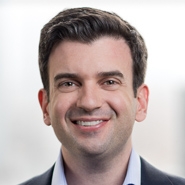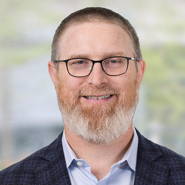Judge Becomes Student in Climate Change Lawsuit “Tutorial” and Other Recent Updates
The novel climate change tort cases are accelerating at a rapid pace. Over the past two weeks, several important events occurred in the lawsuits brought by multiple California cities and counties against the country’s largest energy companies:
- At the invitation of U.S. District Judge William Alsup, plaintiffs Oakland and San Francisco and defendant energy companies participated in an unusual “global warming and climate change tutorial.”
- In the same case, the energy companies filed motions to dismiss the public nuisance climate change claims, arguing that the claims are displaced by the Clean Air Act and other federal statutes, or alternatively, founder on grounds such as the failure to state a viable public nuisance claim and violations of the Constitution’s separation of powers principles.
- In another set of climate change cases in California brought by several other local governments against over thirty energy companies, U.S. District Judge Vince Chhabria created a district-level split on jurisdiction by remanding those claims back to state court.
Whether these cases remain in state or federal court or the claims survive dispositive motions could have wide-ranging ramifications for energy companies and potential public plaintiffs across the nation. For Beveridge & Diamond’s previous coverage of these cases, please follow this link.
Climate Change Tutorial – San Francisco/Oakland Cases
On March 21st, during a five-hour court-mandated tutorial in People v. BP, Judge Alsup fired questions about global warming and climate change at plaintiffs and defendants alike. The local governments have alleged that five major energy companies created a public nuisance by extracting and promoting the sale of fossil fuels with the knowledge that such products caused global warming.
Only one of the defendants’ attorneys spoke at the tutorial. Counsel for Chevron accepted the general scientific consensus that humans are primarily responsible for climate change. However, focusing extensively on a 2013 report by the Intergovernmental Panel on Climate Change, Chevron’s lawyer highlighted uncertainties surrounding the effects of climate change, including sea level rise.
The cities called several experts to present their side to the court. Myles Allen, head of the Climate Dynamics group at the University of Oxford, asserted that science has recognized since the 1950’s the effects and sources of carbon dioxide in the atmosphere. University of California at Santa Cruz professor Gary Griggs and University of Illinois professor Don Wuebbles outlined the increasing rate of sea level rise.
Judge Alsup, who has employed tutorials in other complex scientific cases, indicated at the end of the hearing that the remaining defendant companies, who have objected to the court’s personal jurisdiction, had two weeks to file written statements agreeing with or refuting points made by Chevron’s counsel.
Motions to Dismiss – San Francisco/Oakland Cases
A day before the tutorial, defendants in the Oakland and San Francisco cases filed several motions to dismiss the lawsuits. The primary motion, filed by Chevron and joined by the other defendants, centered on an argument that the Clean Air Act displaced the plaintiffs’ claims.
Defendants argued that, despite the focus of the cities’ claims on the production and sale of fossil fuels, not the eventual combustion of those fuels, the court should hold that the “domestic portions” of plaintiffs’ claims at least are displaced under AEP v. Connecticut and Kivalina v. ExxonMobil “because they ultimately turn on the alleged harm caused by domestic fossil fuel emissions.”
Defendants added that even if plaintiffs’ claims do target fossil fuel production and promotion rather than emissions, the claims are displaced by other federal statutes, like the Energy Policy and Conservation Act of 1992 and the Energy Policy Act of 2005, which encourage and regulate such conduct.
The defendants also posited that the cities’ allegations did not meet the elements of a federal common law claim for public nuisance, asserting, among other defects:
- The failure to show that defendants’ conduct caused the injuries alleged;
- The lack of defendants’ control over the fossil fuels when they were combusted; and
- The relief sought – billions of dollars in adaptation funding – is unconstitutional.
Additionally, defendants asserted that the plaintiffs “cannot prove that worldwide greenhouse gas emissions would have been materially lower but for Defendants’ conduct.
In parallel motions to dismiss, several defendants also argued that the court could not exercise personal jurisdiction over them. Shell also claimed that service of process was insufficient, an alleged flaw which Judge Alsup has suggested is curable.
Remand and District Level Split – San Mateo and Marin Counties, City of Imperial Beach
U.S. District Judge Vince Chhabria, presiding over similar climate change liability cases by multiple California local governments against an assortment of energy companies in County of San Mateo v. Chevron, granted the plaintiffs’ motions to remand their claims back to state court. The court’s ruling creates a district-level split (Judge Alsup in the Oakland and San Francisco litigation denied plaintiffs’ motion to remand), presaging a future decision by the Ninth Circuit Court of Appeals on whether the potentially ground-breaking common law claims can remain in federal court.
Judge Chhabria held that plaintiffs’ claims are not materially different than those in Kivalina, which held that such common law nuisance claims are displaced at the federal level by the Clean Air Act. According to Judge Chhabria, “[s]imply put, these cases should not have been removed to federal court on the basis of federal common law that no longer exists.”
In support of the ruling, the Judge also held that plaintiffs’ claims were not “completely preempted” by the Clean Air Act, which preserves “state causes of action.” If the cases return to state court, however, the preemptive effect of the Clean Air Act will be contested hotly there as well.
The court also disagreed with defendants’ arguments that removal to federal court was warranted on the basis of so-called Grable jurisdiction or any other “specialized statutory removal provisions.”
The court delayed its remand order while it considers whether the order should be certified for interlocutory appeal to the Ninth Circuit.
Implications
Given the stakes, the Ninth Circuit – and, sooner or later, the Supreme Court – will be asked to resolve whether, consistent with prior precedent, any climate change tort claims may be brought in federal forums. And, following a decision on the pending motions to dismiss in the Oakland and San Francisco cases, we can expect to see further controversy over whether federal common law can theoretically provide a remedy for these massive claims. But, even if federal common law cannot be used by the plaintiffs, decisions in these cases that leave open the possibility of state tort law claims ultimately may be pyrrhic victories for the defendants.
Beveridge & Diamond’s Air and Climate Change practice group helps private and municipal clients navigate all aspects of compliance with Clean Air Act regulations for criteria pollutants, hazardous air pollutants, greenhouse gases, and permitting processes. For more information, please contact the authors












